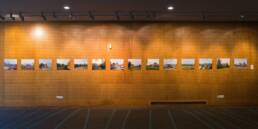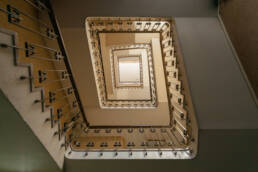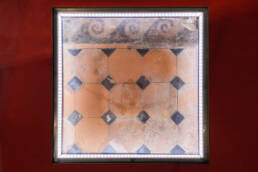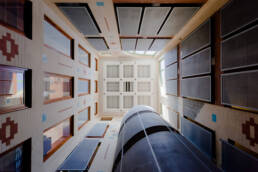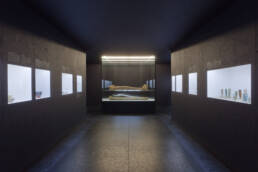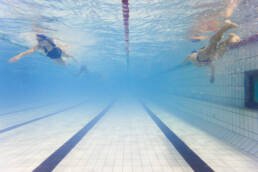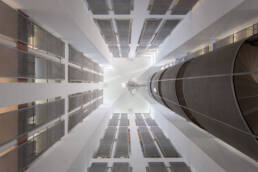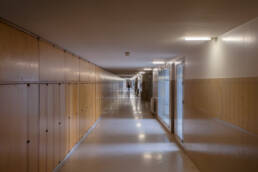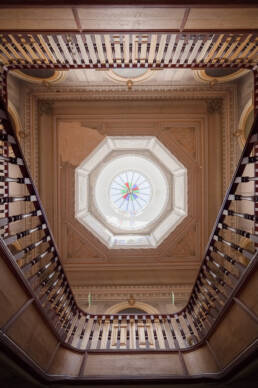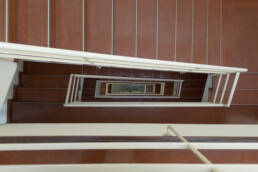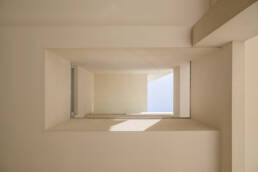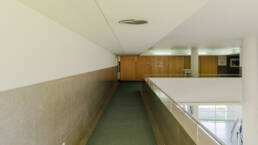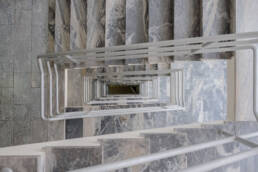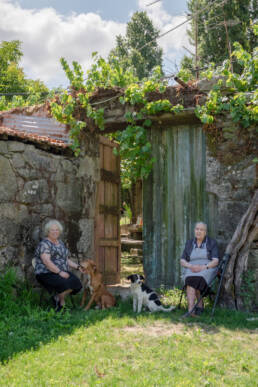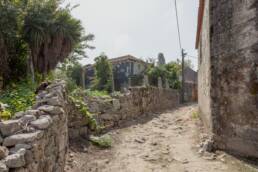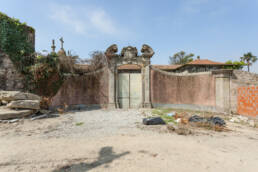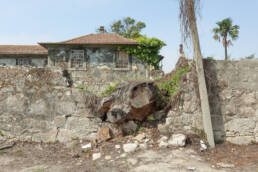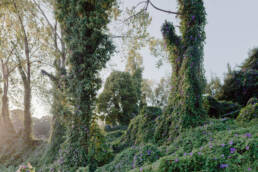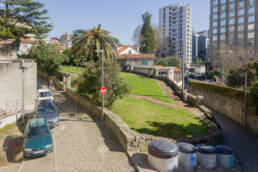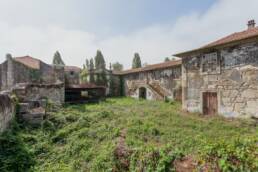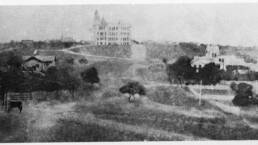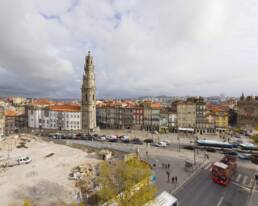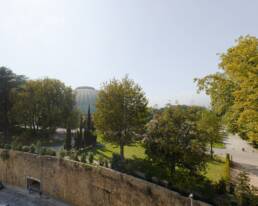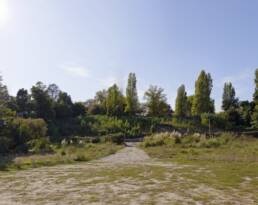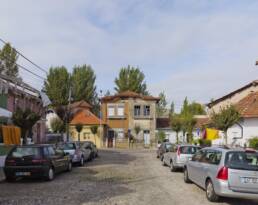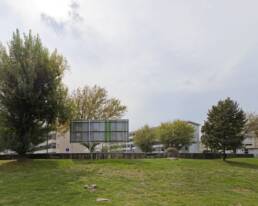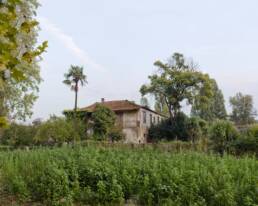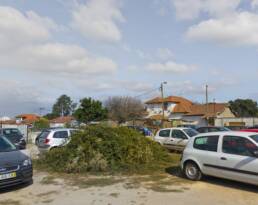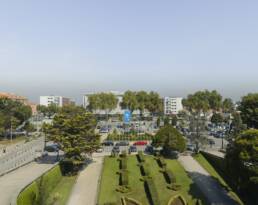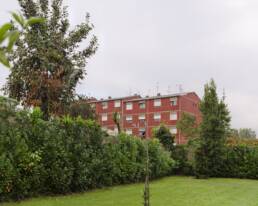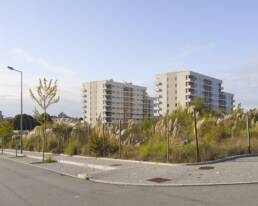The University and the City, Identity and Coexistence
Master's Degree thesis project
Year
2011
Institutions
University of Porto + Polytechnic Institute of Porto + University of Austin, Texas, USA
The University represents an institution in which research and knowledge play a central role and are the reason for its existence. However, the University cannot be dissociated from the spatial, temporal, and social relationship it occupies within the fabric of a city. As a whole, it can be the subject of analysis and a reference for visual representations. The blurring of physical boundaries between the University of Porto and the city reflects the dynamic relationship that time has strengthened between them.
The present project “The University and the City – Identity and Coexistence” aims to highlight, through photographic records, a shared identity, thus celebrating the hundred years of the history of the University of Porto.
Various photographs that explore vanishing points and windows inside of various buildings of the University of Porto.
According to Garry Winogrand, "photography is not about the photographed 'thing,' but about how that 'thing' appears when photographed."
The Master’s project “The University and the City – Identity and Coexistence” consists of the reinterpretation of a photographic project titled “The University and the City – Images for the Future”, developed within the context of an internship at the company TVU. TVU is a multimedia content producer whose activities include communication and dissemination of scientific knowledge from the University of Porto. The opportunity arose to develop a documentary work alongside the production of a photographic project on the centennial of the University, commissioned by the rectorate to the company where the internship was carried out.
The celebrations of the University of Porto’s centennial in 2011 were represented by a series of activities, including the publication of a photography book titled “The University and the City – Images for the Future”. This publication aims to portray various heritage spaces and activities of the University from the contemporary perspective of the institution, with a particular emphasis on human presence. The undertaken photographic work, addressing the construction of a narrative about the University, led us to consider the production of a project capable of integrating academic premises within the scope of the Master’s degree.
Various photographs that reveal striking contrasts in the immediate vicinity of the University of Porto.
The University as an integral part of a city
The buildings of the University of Porto have been integrated into the urban fabric of the city over the past 100 years. They are spread out from the city center to the more peripheral areas, occupying existing buildings or being newly constructed. This continuous process of construction has led to an increase in urban activity, fueled by the movement of citizens and students in Porto for University-related activities. Given the extent of this social and spatial presence, it is understandable that the university and the city share spaces or have ambiguous areas, where the identification of boundaries is not always clear or distinct. This undefined territory represents an object that can be studied through photography.
We can say, then, that the history of a university’s presence in a city is equally the history of the city itself. In the case of the University of Porto, this history has unfolded over a span of one hundred years. It is understandable, therefore, that in terms of its infrastructure, the University has evolved in parallel with the city that hosts it. Considering the city’s predominant development over the past century, the spaces of interaction between the faculties and the city can be approached photographically as scenes of occupation, symbolic territories of this shared narrative that portray the passage of time. The areas outside the faculties, visible to any citizen, often display scenarios where the transformation from rural to residential space has not been a comprehensive process of urbanization.
The earliest known photograph of the University of Texas, which opened in 1883. At the time, UT inhabited a 40-acre tract of land just north of Austin, bounded by 21st and 24th Streets, Guadalupe, and Speedway.
Research Methodology in the United States of America - Investigation at the Briscoe Center for American History
The internship in Austin allowed for the continuation of research initiated in Portugal on the use of photography in constructing the memory of a university in conjunction with the city that hosts it. Similar to the relationship between the University of Porto and the city of Porto, the connection between the University of Texas and the city of Austin is also intrinsic. The research took place at the photographic archive of the Dolph Briscoe Center for American History. This center houses various significant documents related to key themes of the state of Texas and the United States of America.
Considering the photographic project for the centenary of the University of Porto, we find it relevant to conduct research on publications related to the centenary of the University of Texas. The institution was officially inaugurated on September 15, 1883, and the oldest publication of the university, the Cactus yearbook, documents academic life since 1895. Similar to the three editions of the University of Porto related to heritage and its relationship with the city, the content of these yearbooks primarily consists of a collection of articles from newspapers, internal publications, and other documents. However, the editorial perspective is quite different, as it focuses primarily on the life of the academic community. Nevertheless, no specific photographers or photographic projects dedicated to the commemoration are mentioned.
Project Prints
Conclusion
The construction of institutional identity through photography is an important mechanism in all internal communication efforts of a university. The connections between the university and the city that hosts it are, in turn, characteristics of an outward communication effort. The narrative of this interplay between interior/exterior and city/university can be explored through photography. It has allowed us to undertake this thematic photographic project, objectively demarcated and referenced, integral to a personalized and reflective vision, and therefore subjectively interpretative, defining the contours of contemporary documentary practice based not on the form or style of representation, but on the sociological essence of its content. Thus, we suggest reflecting on how we perceive our images and the history of our photographs, the institutions, and the city, and our contribution to asserting a pluralistic “truth.”
